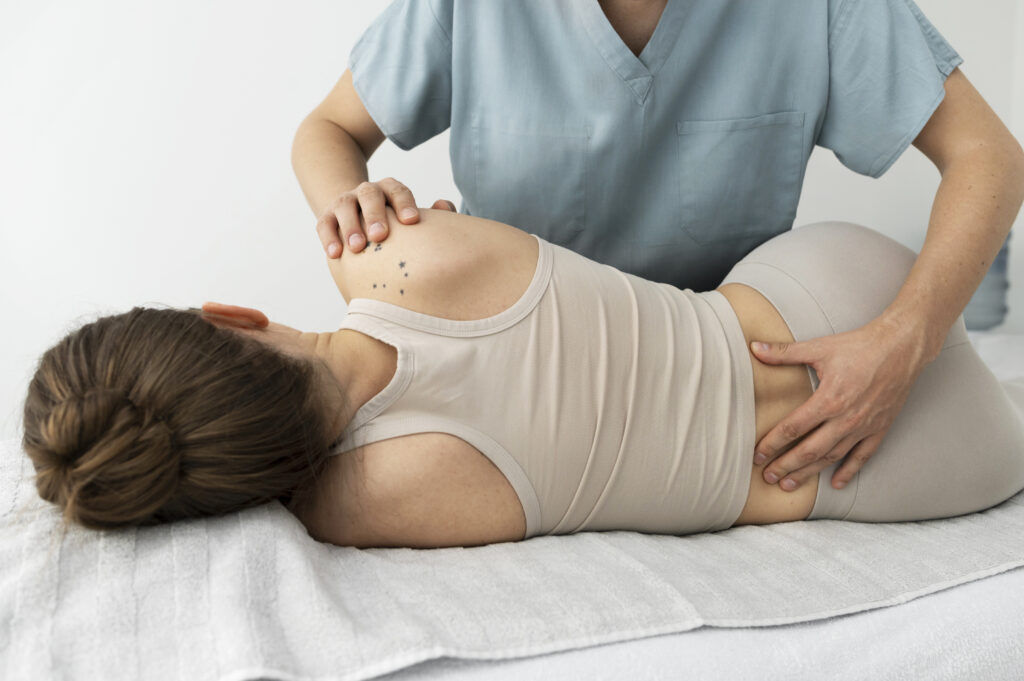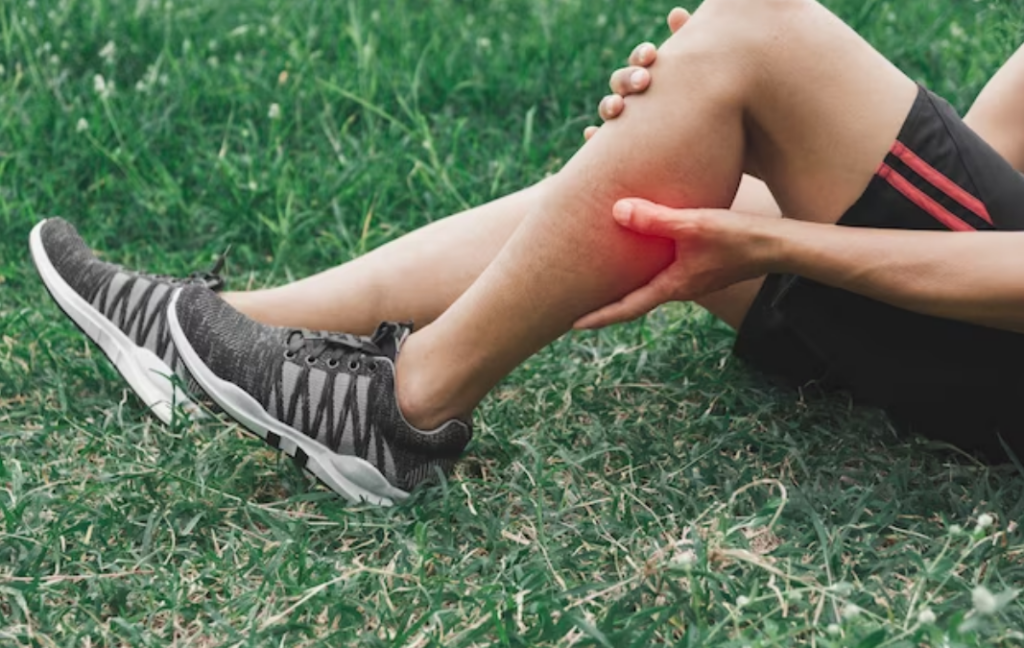If you're looking to improve your flexibility, you've likely realized that it requires more than just occasional stretching. You can adopt several authentic methods that not only enhance your range of motion but also support your overall fitness. From incorporating dynamic stretching into your routine to exploring the benefits of yoga and foam rolling, each approach contributes uniquely to your flexibility journey. As you consider these options, you'll find that some may resonate more with you than others. So, which methods will you choose to integrate into your lifestyle?
Incorporate Dynamic Stretching
Dynamic stretching is a powerful tool for enhancing flexibility and preparing your body for physical activity. Unlike static stretching, which involves holding a position, dynamic stretching incorporates movement, allowing your muscles to warm up and become more pliable. By integrating dynamic stretches into your routine, you'll not only improve your flexibility but also reduce the risk of injury.
Start your dynamic stretching routine with movements that mimic the activity you're about to perform. For instance, if you're going to run, consider leg swings, high knees, or walking lunges. These exercises activate your muscles and joints, increasing blood flow and enhancing your range of motion. Aim for 5 to 10 minutes of dynamic stretching before your workout, focusing on major muscle groups like your legs, hips, and core.
As you incorporate dynamic stretching, keep your movements controlled and deliberate. It's important not to overstretch or rush through the exercises. Maintain a steady pace and focus on your breathing, allowing each stretch to feel natural. You might also want to experiment with different dynamic stretches to find what works best for you.
Lastly, listen to your body. If something doesn't feel right, modify the stretch or skip it altogether. Dynamic stretching should feel good and invigorating, setting a positive tone for your physical activity.
With consistent practice, you'll notice a significant improvement in your flexibility and overall performance. So, make dynamic stretching a regular part of your routine and reap the benefits!
Practice Yoga Regularly
Incorporating yoga into your routine is another effective way to enhance flexibility. Yoga combines stretching and strengthening movements that lengthen your muscles and improve your range of motion. By practicing regularly, you not only work on your flexibility but also cultivate mindfulness and relaxation.
Start by finding a class or online tutorial that suits your skill level. You don't have to be an expert; even beginners can benefit from simple poses. Focus on foundational postures like Downward Dog, Child's Pose, and Cat-Cow. These poses help target different muscle groups and promote flexibility in your spine, hips, and shoulders.
Consistency is key. Aim to practice yoga at least two to three times a week. As you make it a habit, you'll notice gradual improvements in how your body feels and moves. Listen to your body and respect its limits. Don't push too hard; instead, ease into each pose, allowing your muscles to gradually adapt.
In addition to physical benefits, yoga also offers mental clarity. You'll find that focusing on your breath and aligning your movements helps reduce stress and anxiety.
This holistic approach not only enhances your flexibility but also promotes overall well-being.
Use Foam Rollers
Using foam rollers can greatly enhance your flexibility by breaking down muscle knots and increasing blood flow. When you use a foam roller, you apply pressure to specific areas of your body, which helps release tension in your muscles and fascia. This process, known as self-myofascial release, allows your muscles to relax and lengthen, ultimately improving your range of motion.
To get started, choose a foam roller that suits your needs—whether it's a smooth one for gentle rolling or a textured one for deeper massage. Begin by targeting tight areas like your calves, hamstrings, and quadriceps. Slowly roll over the muscle, pausing on any knots you find. The goal is to apply enough pressure to feel discomfort but not so much that it causes pain. Spend about 30 seconds on each spot, breathing deeply to help your muscles release tension.
Incorporating foam rolling into your routine is easy. You can do it before or after your workouts, or even on rest days for recovery. Aim for at least 10 to 15 minutes of foam rolling a few times a week.
As you become more comfortable, you can explore different techniques and positions to target various muscle groups.
Engage in Pilates
Foam rolling is a great way to prepare your body for the next step in enhancing flexibility: engaging in Pilates. This practice focuses on controlled movements and breath, making it an ideal way to improve your overall flexibility. When you start Pilates, you'll notice how the exercises target various muscle groups, helping to lengthen and strengthen them simultaneously.
You'll want to begin with the basics, focusing on your core strength and stability. As you become more comfortable with the foundational exercises, you can gradually increase the intensity and complexity of your routines. Remember, it's important to maintain proper form throughout each movement to maximize your flexibility gains and prevent injuries.
In Pilates, you'll engage in a series of dynamic stretches that promote greater range of motion. Each session typically includes exercises like the 'Roll Up' and 'Spine Stretch,' which specifically target tight areas.
Pay attention to your breathing, as it helps you stay focused and relaxed during your practice. Additionally, consider joining a Pilates class or following online sessions to make sure you're executing movements correctly. Working with an instructor can provide valuable feedback and adjustments, enhancing your understanding of the practice.
Perform Static Stretching
Static stretching is a key component in enhancing flexibility that you can easily add to your routine. By incorporating static stretches into your regimen, you're giving your muscles the chance to lengthen and relax after a workout or during your cool-down period. This method involves holding a stretch for a specific duration, typically between 15 to 60 seconds, to effectively improve your range of motion.
To get started, choose stretches that target major muscle groups, such as your hamstrings, quadriceps, back, and shoulders. For example, to stretch your hamstrings, sit on the ground with one leg extended and the other bent. Reach toward your toes, feeling the stretch in the back of your leg. Hold that position and breathe deeply.
It's essential to perform stretches with proper form to avoid injury. Focus on feeling the stretch, not pushing through pain. You should feel tension, but never discomfort. Consistency is key, so aim to stretch at least three times a week, ideally after your workouts when your muscles are warm.
Consider incorporating static stretching into your morning routine or as a way to unwind before bed. This practice not only enhances flexibility but also promotes relaxation and reduces muscle tension.
Maintain Hydration
Staying well-hydrated is essential for enhancing flexibility and overall physical performance. When your body is adequately hydrated, your muscles and joints function more efficiently, allowing for smoother movements and improved range of motion. Dehydration can lead to muscle cramps, stiffness, and fatigue, which can hinder your ability to stretch and perform physical activities effectively.
To maintain proper hydration, aim to drink water consistently throughout the day, rather than just when you feel thirsty. Thirst is often a sign that your body is already starting to dehydrate. Keep a water bottle handy, and set reminders if needed to guarantee you're drinking enough. A good rule of thumb is to consume about half your body weight in ounces of water daily. For example, if you weigh 150 pounds, aim for about 75 ounces of water.
It's also important to pay attention to your hydration needs during and after exercise. If you're sweating heavily, you'll need to replenish lost fluids. In these cases, consider electrolyte-enriched drinks, especially if you're engaging in prolonged physical activities.
Foods with high water content, like fruits and vegetables, can also contribute to your hydration levels.
Warm Up Properly
A proper warm-up is essential for enhancing flexibility and preventing injury during physical activities. When you take the time to prepare your body, you're not only increasing your range of motion but also reducing the risk of strains and sprains.
Start with dynamic movements that gently elevate your heart rate and get your blood flowing. Consider activities like arm circles, leg swings, or gentle torso twists. These movements increase circulation to your muscles and joints, setting the stage for deeper stretching later on.
After about five to ten minutes of light aerobic activity, it's time to focus on specific stretches. Target the major muscle groups you plan to use in your workout, like your hamstrings, quadriceps, hips, and shoulders.
Hold each stretch for about 15 to 30 seconds, ensuring you're not bouncing or forcing the stretch. Instead, breathe deeply and relax into each position.
Enhance Muscle Strength
Building muscle strength is essential for overall fitness and functional performance. When you enhance your muscle strength, you not only improve your ability to perform daily activities, but you also create a solid foundation for flexibility. Strong muscles support your joints and reduce the risk of injury, making it easier for you to stretch and move freely.
To enhance muscle strength, incorporate resistance training into your routine. You can use weights, resistance bands, or even your body weight for exercises like squats, push-ups, and lunges. Aim for at least two to three sessions per week, focusing on all major muscle groups. Start with lighter weights and gradually increase the resistance as you become stronger.
Don't forget the importance of proper form. Using the right technique not only maximizes your workout but also helps prevent injuries. If you're unsure about your form, consider working with a trainer or watching instructional videos.
Additionally, allow your muscles time to recover. Strength training puts stress on your muscles, and they need time to rebuild. Make sure you're giving each muscle group at least 48 hours of rest before targeting it again.
Lastly, combine your strength training with a balanced diet rich in protein. This will help your muscles recover and grow stronger.
Focus on Breathing Techniques
Breathing techniques play an essential role in enhancing flexibility and overall physical performance. When you focus on your breath, you not only improve oxygen flow to your muscles but also create a calming effect that can help you stretch more effectively.
Here are some breathing techniques you can integrate into your routine:
- Diaphragmatic Breathing: This deep breathing technique engages your diaphragm, allowing you to take in more air. Inhale slowly through your nose, expanding your abdomen. Exhale through your mouth, contracting your abdomen. This helps lower stress levels and prepares your body for stretching.
- Box Breathing: Visualize a box as you breathe. Inhale for a count of four, hold for four, exhale for four, and hold again for four. This method not only focuses your mind but also enhances the stability of your breath, making your stretches more effective.
- Pursed Lip Breathing: Inhale deeply through your nose, then exhale slowly through pursed lips. This technique helps control your breathing and prolongs exhalation, which can help release tension in your muscles during stretches.
- Breath Synchronization: Coordinate your breath with your movements during stretching. Inhale as you lengthen your body and exhale as you deepen into your stretch. This rhythmic approach enhances flexibility and keeps you grounded.
Stay Consistent With Routine
Maintaining a consistent routine is key to reaping the benefits of the breathing techniques you've integrated into your flexibility training. When you establish a regular practice, you create a pathway for improvement and allow your body to adapt to the demands of stretching. Consistency doesn't mean you have to spend hours each day; even short, focused sessions can yield great results if done regularly.
Start by setting aside specific times each week for your flexibility training. It could be in the morning to energize your day or in the evening to unwind. Whatever you choose, stick to it. This will help you build a habit, making it easier to commit to your practice. Use a calendar or a reminder app to keep track, ensuring you don't let life's distractions derail your progress.
Incorporate breathing techniques into your routine every time you stretch. Focused breathing not only enhances your flexibility but also helps you stay present in the moment. If you miss a session, don't be too hard on yourself; just get back on track as soon as you can. Remember, it's about progress, not perfection.
Finally, celebrate your milestones, no matter how small. Recognizing your achievements can boost your motivation and reinforce your commitment to your routine. By staying consistent, you'll notice gradual improvements in your flexibility, making your efforts worthwhile and encouraging you to keep going.
Conclusion
By incorporating these authentic methods into your routine, you'll see improvements in your flexibility over time. Embrace dynamic stretching, yoga, and foam rolling, while also prioritizing strength training and proper warm-ups. Don't forget the importance of breathing techniques and staying consistent in your practice. With dedication and a balanced approach to hydration and nutrition, you'll not only enhance your flexibility but also support overall muscle recovery. So, get started and enjoy the journey to a more flexible you!



